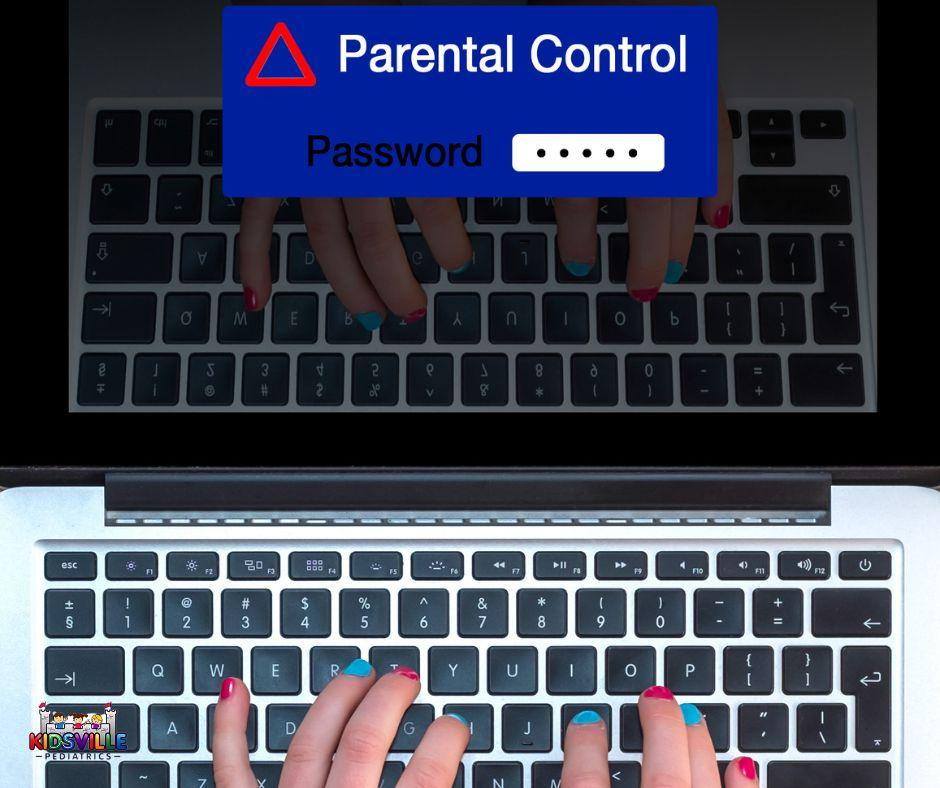
In today's digital age, screens are everywhere — from smartphones and tablets to televisions and computers. Just recently, the video of a toddler who was lifted up by a giraffe was seen across the state and even merited a report from BBC News – this is how powerful technological gadgets can carry news throughout the globe.
For children, these devices offer a wealth of educational and entertainment opportunities. However, managing kids screen time is essential to ensure that children benefit from these digital experiences without compromising their health and well-being, according to pediatrician Texas experts. Establishing healthy screen time habits is crucial for fostering a balanced lifestyle that promotes physical activity, creativity, and face-to-face interactions.
One of the primary concerns with excessive screen time is its impact on physical health. Prolonged kids screen time can lead to many child health issues when left unchecked. Parents and caregivers play a vital role in guiding children toward healthy screen habits. Modeling balanced screen use and prioritizing family time without digital distractions sets a positive example for children.
7 Tips for Balanced Screen Time for Kids
Tip #1. Encourage Outdoor Play and Sports

Leading by example is one of the most effective ways to encourage outdoor play and sports and, eventually, less screen time. Children are more likely to engage in outdoor activities if they see their parents and caregivers doing the same. Make physical activity a family affair by going for walks, bike rides, or playing sports together.
Establishing a routine that includes designated times for outdoor play can help children get into the habit of being active. For instance, schedule a daily or weekly "outdoor hour" where the entire family heads outside to play or engage in sports.
Transforming your backyard or nearby park into a fun and appealing play area can also entice kids to spend more time outdoors. Simple additions like a swing set, sandbox, or a basketball hoop can make outdoor spaces more inviting.
Encouraging participation in organized sports is another great way for children to stay active, learn new skills, and make friends. Suggest joining a local soccer team, swimming class, or dance group.
Setting clear boundaries for screen time ensures it doesn’t interfere with physical activities. Establish rules like no screens until after outdoor play or sports practice. Consistent enforcement of these rules helps children understand the importance of balancing screen time for children with other activities.
Organize a scavenger hunt in your backyard, a local park, or even around the neighborhood. Create a list of items for children to find and watch as they enthusiastically run around searching for treasures.
Set up a simple obstacle course using items like cones, hula hoops, and jump ropes. Kids can race against each other or try to beat their own times. This activity helps improve coordination, agility, and overall fitness.
On a hot day, water activities can be a refreshing way for kids to stay active. Set up a sprinkler, kiddie pool, or slip-n-slide in your yard.
Take advantage of nearby trails, parks, or nature reserves to go on family hikes or nature walks. Encourage children to observe their surroundings, identify plants and animals, and appreciate the beauty of nature.
Turning up the music and having a dance party in your living room or backyard is a fantastic way to get moving and can be done solo or with friends and family.
Engaging children in classic sports games like soccer, basketball, or baseball boosts physical health and teaches valuable skills like teamwork, strategy, and fair play.
Involving your children in gardening activities such as planting flowers, vegetables, or herbs requires physical effort like digging, planting, and watering, making it a great workout.
By incorporating these tips and activities into your routine, you can help children develop healthy habits that balance screen time with physical activity. This balance is essential for their overall growth, ensuring they enjoy the benefits of both digital and real-world experiences.
Tip #2. Create Screen Free Zones and Times

Picture this: a cozy dinner table where everyone's fully engaged in conversation, laughing, and bonding without the distraction of smartphones or tablets. Sounds like a dream, right? Well, it can be your reality! By establishing designated no-screen times during meals, you're not just nourishing your bodies but also nurturing your relationships.
And what about those precious moments before bedtime? Instead of scrolling through endless feeds or binge-watching shows, why not opt for screen-free activities that promote relaxation and connection? Whether it's reading a book together, playing board games, or simply sharing stories from the day, you'll find that bedtime becomes a much more peaceful and enjoyable experience for the whole family.
But the benefits of going screen-free don't stop there! By actively engaging in screen-free family activities, you're fostering creativity, communication, and cooperation among your loved ones. Whether you're exploring the great outdoors, getting crafty with DIY projects, or embarking on spontaneous adventures, you're creating memories that will last a lifetime.
So, say goodbye to mindless scrolling and hello to meaningful connections. It's time to reclaim your family time and create screen-free zones and times that prioritize presence over pixels. Trust me, your family will thank you for it!
Tip #3. Pick Educational and Age-appropriate Content

First things first, let's talk recommendations. With thousands of educational apps and programs out there, it's essential to do your research and find ones that are not only engaging but also aligned with your child's interests and learning style. Whether your child is into math, science, language arts, or anything in between, there's bound to be an app or program that caters to their interests and needs.
But with great options comes great responsibility, and that's where evaluating content for age-appropriateness comes into play. When it comes to choosing educational content for your child, it's crucial to consider their age, developmental stage, and individual preferences. Look for content that is not only educational but also age-appropriate, challenging enough to keep them engaged, but not too overwhelming to frustrate them.
So, where do you start? Well, why not ask for recommendations from other parents, teachers, or educational experts? They've likely tried and tested various apps and programs and can offer valuable insights into what works and what doesn't. Additionally, don't be afraid to read reviews, check ratings, and even try out free trials before committing to a paid subscription.
In conclusion, choosing educational and age-appropriate content doesn't have to be a daunting task. With a little research, recommendations, and some trial and error, you'll be able to find the perfect educational content that not only entertains but also enriches your child's learning journey. So go ahead, dive into the world of educational apps and programs, and watch your child's curiosity and knowledge flourish!
Tip #4. Managed Screen Time for Children = Improved Sleep Quality

Are you ready to help your little ones get the sleep they need for happy, healthy days ahead? Let's dive into a crucial topic: managing your kids screen time for better sleep!
We all know how tempting it can be to let our kiddos wind down with a tablet game or their favorite TV show before bed. But did you know that excessive screen time can seriously disrupt their sleep patterns? Yep, those bright screens and stimulating content can make it tough for them to settle down and get the rest they need.
Let's talk about the impact of screens on sleep quality. The blue light emitted by screens can mess with your kids' circadian rhythm, making it harder for them to fall asleep and stay asleep. Plus, all that exciting content can get their brains buzzing, making it tough to wind down at bedtime.
So, how can you help your kids get the sleep they need? It's all about setting boundaries and creating a bedtime routine that minimizes screen time. Start by establishing a screen curfew at least an hour before bedtime. Encourage quiet, calming activities like reading, coloring, or listening to soft music instead.
But what about those nights when your kids just can't resist the allure of their screens? Instead of giving in to screen time right up until bedtime, try introducing some screen-free alternatives into their routine. You could have a family game night, do a puzzle together, or have a cozy bedtime story session.
Tip #5. Use Technology for Educational Purposes

With interactive apps, educational games, and online resources, kids have access to a world of knowledge right at their fingertips. Whether it's exploring the wonders of science through virtual simulations, practicing math skills with interactive quizzes, or learning a new language through immersive apps, technology opens up a whole new realm of educational opportunities.
But here's the thing: balance is key! While technology can be a powerful tool for learning, it's important to find a healthy mix of digital and traditional resources. That means incorporating hands-on activities, books, and real-world experiences alongside screen time. After all, there's no substitute for the tactile experience of flipping through a book, conducting experiments in a science lab, or exploring nature firsthand.
So, how do we strike that balance? It's all about being intentional and mindful in how we use technology in pediatric learning. Instead of mindless screen time, encourage kids to engage with educational apps and programs that align with their interests and learning goals. Set limits on screen time for children and establish clear boundaries to ensure that technology remains a tool for learning, not a distraction.
Additionally, don't forget about the power of parental involvement! Take an active interest in your child's digital learning journey by exploring educational apps together, discussing what they're learning, and providing guidance and support along the way. By fostering a positive relationship with technology and promoting responsible digital citizenship, you can help your child navigate the digital world with confidence and curiosity.
Tip #6. Set Parental Controls

Parental controls come in all shapes and sizes, depending on the devices and apps your family uses. From smartphones and tablets to gaming consoles and streaming services, there's a wide array of tools and features available to help you tailor your child's digital experience.
One of the most powerful aspects of parental controls is the ability to filter out content that may not be suitable for your child's age or maturity level. With just a few simple settings adjustments, you can block access to websites, apps, and online videos that contain inappropriate language, violence, or other adult themes.
But parental controls aren't just about blocking content – they're also about managing screen time. With features like time limits and bedtime schedules, you can set boundaries around when and how long your child can use their devices each day. This not only helps prevent excessive screen time but also encourages healthier habits and better sleep hygiene.
And let's not forget about the importance of monitoring your child's online activity. Many parental control tools allow you to track which apps and websites your child is using, how much time they're spending on each activity, and even their location in real time. This gives you valuable insight into their digital habits and allows you to step in if you notice any concerning patterns or behavior.
Tip #7. Foster Open Communication

By fostering open communication, you're creating a safe space for your kids to share their thoughts, concerns, and questions about screen time.
Start by initiating regular conversations about screen time and its effects. Ask your kids how they feel about their screen time habits and how it makes them feel physically, mentally, and emotionally. Encourage them to share any worries or struggles they may have, whether it's feeling tired after too much screen time or feeling left out when their friends are glued to their devices.
But communication isn't just about talking – it's also about listening. Be sure to actively listen to your kids' concerns and validate their feelings. Let them know that it's okay to have questions or worries about screen time and that you're there to support them every step of the way.
Use these conversations as an opportunity to educate your kids about the importance of balance when it comes to kids screen time. Help them understand why it's essential to take breaks from screens, engage in other activities, and prioritize their overall health and well-being.
And don't forget to lead by example! Show your kids that you value open communication by being honest and transparent about your own screen time habits. Share your own struggles and successes with managing screen time, and let your kids know that you're all in this together as a family.
By initiating regular conversations, actively listening to your kids' concerns, and leading by example, you're creating a supportive environment where your kids feel empowered to make smart choices about their screen time. So go ahead, start the conversation today, and watch your family's relationship with screens grow stronger than ever!
Conclusion
So, how do we do it without turning into screen time police? Well, it's all about finding that sweet spot between fun and moderation. We've got a few tricks up our sleeves to help strike that balance and keep our kiddos thriving.
First off, let's talk about getting outside and getting moving. It's as simple as setting the example and making outdoor play a family affair. Whether it's a game of catch in the backyard or a hike in the woods, spending time in nature is a great way to dial down the screen time and amp up the fun.
Next up, let's create some screen-free zones and times. Picture this: a cozy dinner table where everyone's fully engaged in conversation, laughing, and bonding without the distraction of smartphones or tablets. Sounds pretty dreamy, right? By carving out specific times and spaces for screen-free fun, we're giving our kids the chance to connect with each other and with us.
And speaking of fun, let's make sure the stuff they're watching and playing is actually worth their time. We're all about finding those educational apps and programs that sneak in some learning while they're having a blast. It's all about finding that perfect mix of entertainment and education.
But hey, we get it — sometimes screen time sneaks up on us, and that's okay! The key is to keep the conversation flowing. By checking in regularly with our kids about their screen habits and how they're feeling about it all, we're showing them that we're in this together.
So, there you have it — a laidback guide to managing kids screen time. It's all about finding that balance, setting some boundaries, and keeping the lines of communication open. With a little bit of effort and a whole lot of love, we've got this screen time thing in the bag. 📱💪
